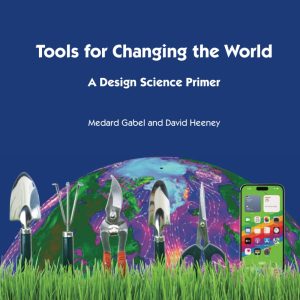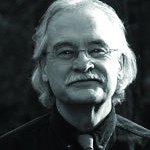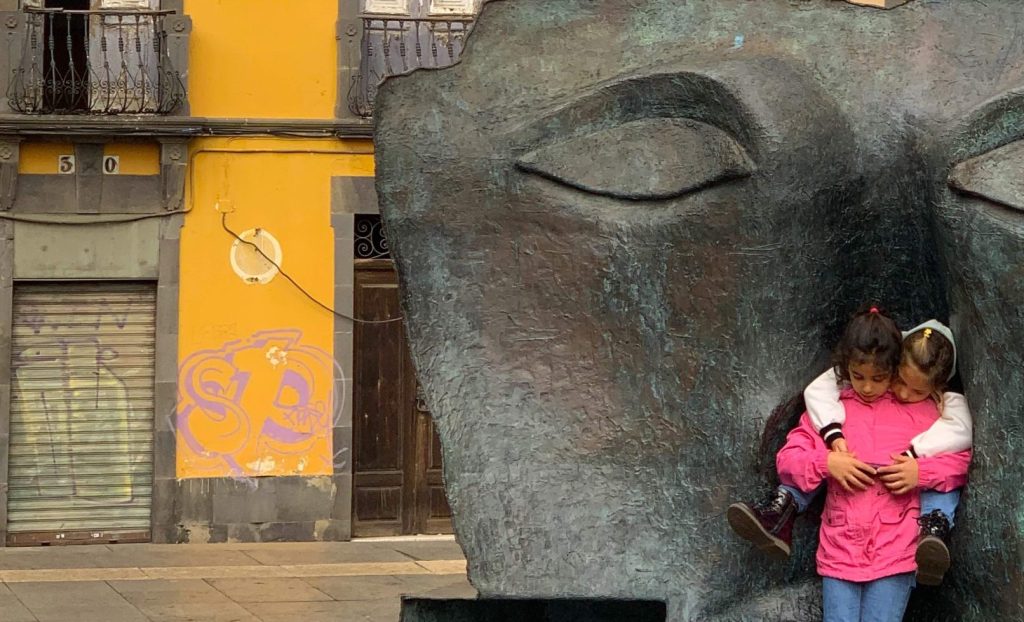Design Science: Thinking Like a Planet
 Editor’s note | This article is an excerpt from Tools for Changing the World: A Design Science Primer. The book is based on and draws inspiration from the visionary work of Buckminster Fuller, with whom the authors worked and studied. It presents a methodology for being an effective architect of the future, for building a new world that meets the needs of everyone. Tools for Changing the World is available in print at Amazon and as a free digital download from NewWorld Game. (If you are outside the US the link for your local Amazon is here.)
Editor’s note | This article is an excerpt from Tools for Changing the World: A Design Science Primer. The book is based on and draws inspiration from the visionary work of Buckminster Fuller, with whom the authors worked and studied. It presents a methodology for being an effective architect of the future, for building a new world that meets the needs of everyone. Tools for Changing the World is available in print at Amazon and as a free digital download from NewWorld Game. (If you are outside the US the link for your local Amazon is here.)
Design Science is…
…”the effective application of the principles of science to the conscious design of our total environment in order to help make the Earth’s finite resources meet the needs of all of humanity without disrupting the ecological processes of the planet.” — Buckminster Fuller
Design science is a methodology for changing the world. It involves the application of the principles and latest findings of science to the creative design and implementation of solutions to the problems of society. And to do this in as short a time as possible.
Design science is a way of recognizing, defining, and solving complex problems that is based on innovation and thrives on transparency. It takes a whole system, global, and anticipatory approach that fosters creative collaboration and synergy in the development of comprehensive solutions to both global and local problems. It was inspired by the work of Buckminster Fuller and other planners, scientists, and visionaries.
How is Design Science Different from Other Planning Processes?
Unlike many planning and political processes that compartmentalize issues and seek to develop solutions in a vacuum, design science stresses comprehensive thinking based on a clear understanding of:
- The state of the world
- Available resources
- Appropriate technology
- Culture
- Environmental constraints
- The interconnections between world problems and opportunities
The design science planning process provides a framework for devising solutions to current problems as well as anticipating future needs.
Design science is different from other problem-solving and planning methodologies in its comprehensive, anticipatory, inclusive, and transparent approaches to the development of solutions. It takes a ‘whole to particular’ approach that is both global in perspective and in its examination of options. It seeks to build capacity rather than merely solve problems and to develop solutions that are transformative rather than merely the reforming of already inadequate systems. It is informed by a moral vision that places a priority on designing ways of meeting unmet basic human needs in ways that are environmentally sustainable and socially just.

The core of this approach to problem-solving and planning is both a concern with whole systems of the whole Earth, the entire history of the planet, the global economy, all of technology, and all of humanity—both those living now and those yet to be born—as well as a recognition that everything is implemented locally. The success or failure of a particular design solution thrives or dies at the local level.
Design science is comprehensive, in that it starts from the whole system and works back to the special case. It deals with all facets of a problem, including the larger system of which the problem is a part; in this sense, design science seeks to build capacity, not just solve problems.
It is anticipatory, in that it seeks to recognize the threats coming down the pike before they arrive full-blown on an unsuspecting or ill-prepared society; and it deals with the way things are going to be when the solution is going to be implemented, not just the way things are in the present.
It is a design strategy, in contradistinction to a political or ‘let’s pass-a-law-and-change-human-behavior’ approach; it seeks to change the larger system of which the specific problem is a part through the introduction of innovative artifacts or policies.
It is a science in that it seeks to use evidence-based solutions rather than politics, ideology, or wishful thinking to solve problems.
Its definitions of problems and their solutions are science-based and rely more on synthesis than reductionistic thinking. (Describing design science through the paradigm of science, one can say that design science seeks to formulate its designs and problem solutions as testable hypotheses.
A design prototype is an experiment to test the hypothesis. If the hypothesis, after testing, is “true,” the prototype can be scaled up and go into mass production.)
Table 1. Traditional Science and Design Science
| Aspect | Traditional Science | Design Science |
| Method | Thesis, testable hypothesis, experiment, validation/rejection of thesis | Thesis, testable hypothesis (design prototype), experiment (building prototype), validation/rejection of thesis |
| Goal | Increased understanding of some facet of the universe | Increased understanding of human needs and strategies to meet them |
| Objective | Seeks the most economical description of the universe | Seeks the “trim tab” solution with the greatest positive impact for the least cost |
| Strategy | Analysis | Synthesis and taking action |
| Results | Once validated, published and part of scientific canon | Once validated, results are scaled up and mass-produced, becoming part of the design science options canon |
“How can we use science to help solve the daunting catalogue of trans-border health, energy and quality-of-life challenges confronting our globalized, ‘flattened’ world? By developing scientific and technological techniques that transcend disciplinary boundaries, reflect diverse perspectives, and incorporate the contributions of traditionally underrepresented groups.”
— Shirley Ann Jackson, former President of Rensselaer Polytechnic Institute
This “comprehensive anticipatory design science” is at least as much a perspective on the problems of the world as it is a methodology for tackling those problems. When applied to contemporary problems, it can lead to strikingly fresh insights and solutions.
Design science is a tool that is based on a global perspective and a systems approach to the problems of the world. It assumes that globalization has made the world an ever more interconnected whole, and any successful problem solving of society’s systemic ills needs to be an approach that is global, comprehensive, visionary, and based on science, not politics, ideology, or wishful thinking. The entire world is now the relevant unit of analysis, not the city, state, or nation. At the same time, design science is also locally focused on specific conditions, climate, culture, capacities, resources, and needs.
We are onboard, as Buckminster Fuller pointed out, “Spaceship Earth,” and the illogic of 200+ nation-state admirals all trying to steer the spaceship in different directions is made clear through this metaphor. Just as the Spaceship is on one trajectory around the Sun, all the many billions of individuals aboard that ship have their unique and diverse paths and needs. Recognizing that the macro and micro are not mutually exclusive but are two sides of the same problem-solving coin is an essential skill of design science.
The design science process is augmented by vast quantities of statistical information about the state of the world, its resources, human trends, needs, technology, and options. With the advent of personal computers and the Internet, this information became almost universally available.
The Internet has not leveled the global playing field so much as expanded it, and the good-ol’-boy-status-quo-maintaining political process can now be subverted by a process that brings Thomas Jefferson’s notions of egalitarianism into the twenty-first century.
Design science is not another specialized discipline but rather an integration of disciplines. Its practice is not a further winnowing out of the secrets of the universe, as in research at the frontiers of physics or biology, but an integrative discipline wherein the findings of the sciences and humanities are brought to bear to solve humanity’s problems.
In Fuller’s words, design science is a process where individuals or teams of people can “make the world work, for 100% of humanity, in the shortest possible time, through spontaneous cooperation, without ecological offense or the disadvantage of anyone.”

Making the world work for 100% of humanity reflects Fuller’s global perspective as well as his values. We are not here just to make ourselves rich, famous, or top consumer of the day or decade, or here just for the 5% living in North America or Europe—or the 1 or 10% who have 85% of global wealth—we are here for all humanity. The “spontaneous cooperation” in the above quote is instructive in light of the previous discussion. The phrase does not read, “make the world work for 100% of humanity through a central government, through enforced coercion by a strong military, or the dominant superpower” but through a cooperation that arises from a fundamental transparency of society and its needs. If everyone knows what the situation is, has a clear vision of what should be and what needs to be done, we cooperate to get it done—as we do as a society in times of emergency.
Fuller said: “I am enthusiastic over humanity’s extraordinary and sometimes very timely ingenuities. If you are in a shipwreck and all the boats are gone, a piano top buoyant enough to keep you afloat that comes along makes a fortuitous life preserver. But this is not to say that the best way to design a life preserver is in the form of a piano top. I think that we are clinging to a great many piano tops in accepting yesterday’s fortuitous contrivings as constituting the only means for solving a given problem.”
Present-Day Problem-Solving
Present-day problem-solving and planning is the attempt to solve 10 to 20-year regional or global problems with 2 to 4-year local solutions staffed by bureaucrats with 1 to 2-year appointments funded with 1-year allocations that have been budgeted by politicians who can’t see further ahead than 6 months, the next vacation, or the next election (whichever comes first).
These individuals often know next to nothing about the problem they are addressing, other than it does not, like bell-bottom pants and lava lamps, seem to go away if ignored. They were elected by voters informed by sound bites and situation comedies and who see adversity as an excuse to go shopping. The best that we can expect from this process is that which will fail slowly. We are trying to solve vast problems with half-vast solutions. Or, as Mark Twain said, “Sometimes I wonder whether the world is being run by smart people who are putting us on or by imbeciles who really mean it.”
Present-day problem-solving and planning is usually one of two types:
- Reactive planning: This form of problem-solving tries to undo what has been done. It seeks to prevent real change. It is oriented toward threats rather than opportunities; it repairs faults in the present rather than prepares for the future. Reactive planning usually seeks to find someone to blame; it looks for a simple thing and then removes it. Its normal mode is repression or elimination; science and technology are often seen as the villain. Reactive planning is motivated by fear. Its solutions are often human-oriented. The problem solver finds out who the troublemaker is and gets rid of him. This form of planning sees the world as a series of machines.
- Inactive planning: This form of problem-solving sees the current situation as acceptable, assuming that if nothing is done, things will stay the same. Their motto is “Do nothing and nothing will change.” Inactive planning seeks equilibrium, to keep things the way they are.
This form of planning is characterized by people who are busy as hell doing nothing. There is an abundance of red tape, bureaucracy, committees, and elaborate rituals that give the impression of something being done. There is a paralysis of analysis and a hesitancy that borders on an inability to act.
Present-day problem-solving and planning is most often characterized by the mental diseases of overspecialization, reductionism, and local focus hocus pocus. Attempting to solve complex, interlinked global and local problems with simple solutions is like rearranging the chairs on the deck of the Titanic. Additional dis-eases show up as:
- Scarcity/zero-sum dementia: Attempting to solve complex, interlinked global and local problems while assuming there isn’t enough to go around guarantees that there will not be enough to go around.
- Crisis-to-crisis/manic/depressive management, reactive problem-solving: Attempting to solve complex, interlinked global and local problems while the ship is smashing into an iceberg is neither productive nor healthy.
- Growth obsession: the fallacy of more (“Obesiodity”): Attempting to solve complex, interlinked global and local problems with more of the same is like increasing the speed of the Titanic as the solution to the iceberg.
- Mechanistic thinking: Attempting to deal with living systems with mechanical models guarantees solutions that are dead in the water.
- Dictator complex: Attempting to solve complex, interlinked global and local problems without the input, cooperation, and creative involvement of those who will benefit from the solution produces dull exercises in futility (or exciting but deadly voyages on “unsinkable” ships).
- Ideology as a substitute for thought: Attempting to solve complex, interlinked global and local problems with ideology is like believing your ship is unsinkable.
As the litany of problems the world faces transforms from one crisis to another, we are faced with an increasingly daunting challenge. Many would say these challenges are insurmountable and frightening. Others are convinced that human ingenuity is up to the task of saving itself. As H.G. Wells summarized more than 100 years ago, “Human history becomes more and more a race between education and catastrophe.”
 Whether it is climate change, hunger, terrorism, lack of health care, illiteracy, water shortages, environmental destruction, economic collapse, resource shortages, natural disasters, or poverty, the race is on. Can we make the world work for everyone in a sustainable manner before we run out of resources, destroy the environment’s ability to regenerate itself, or the have-nots get fed up with the increasing gap between their children’s prospects and those of the super-rich and take matters into their own hands—or the haves, afraid of losing what they have, do the same? In a well-armed and ever-increasingly better-informed world, where everyone knows how the other half lives, can the world afford to lose this race?
Whether it is climate change, hunger, terrorism, lack of health care, illiteracy, water shortages, environmental destruction, economic collapse, resource shortages, natural disasters, or poverty, the race is on. Can we make the world work for everyone in a sustainable manner before we run out of resources, destroy the environment’s ability to regenerate itself, or the have-nots get fed up with the increasing gap between their children’s prospects and those of the super-rich and take matters into their own hands—or the haves, afraid of losing what they have, do the same? In a well-armed and ever-increasingly better-informed world, where everyone knows how the other half lives, can the world afford to lose this race?
Will we be able to figure out how to meet the basic human needs of 100% of humanity in time? The technology and resources are available to feed, clothe, house, provide clean water, sanitation, energy, education, health care, communication, and transportation so that all of humanity has, at minimum, their basic human needs met. Given this, the challenge before us is fundamentally a design challenge: how do we design and redesign the world’s life-support systems so that everyone is taken care of? How do we do this in a sustainable, circular, and regenerative way? And, how do we do this in the shortest time possible? That is what this book is all about.
Table 2. Present-Day Problem-Solving vs. Design Science
| Aspect | Present Planning | Design Science |
| Area of Focus | Local | Global and local in a global context |
| Time Horizon | Short-term | Long-term |
| Response | Crisis to crisis, reactive | Anticipatory, proactive |
| Models | Mechanistic | Biological |
| Methodology | Reductionist, specialized | Synthesis, comprehensive |
| Resources | Assumes scarcity | Assumes abundance |
| Approach | “Solves” problems reactively or inactively | Builds capacity, proactive |
| Environment | Non-sustainable | Regenerative |
| Solutions | Laws that seek to change people | Artifacts that change the environment |
| Political Framework | Top-down | Network |
| Social Role | Status quo | Change-makers |
| Business Approach | Managerial | Visionary Entrepreneur |
| Problem Approach | Reformation | Transformation |
“Most current efforts to improve society are directed at getting rid of what we do not want rather than getting what we do want. Getting rid of what we do not want often results in getting something worse.”
— Russell Ackoff
Design Science is Proactive
In contrast to reactive and inactive planning, design science assumes the future is controllable. Life depends less on what happens than what we do. Design science is concerned with developing a vision of a desirable future and the ways of bringing it about. It is concerned more with designing the future than forecasting it, and the idealization of a system rather than its optimization. Design science is motivated by aspiration rather than fear.7
Design science is a method for developing life-preserving and enhancing solutions to society’s problems. It replaces outdated contrivances with designed solutions that are regenerative, affordable, and increase the well-being of the whole world.
Just as local Band-Aids on systemic problems do not help anyone but bandage manufacturers, local, small-scale efforts aimed at systemic problems are addressing vast problems with half-vast solutions.
Design science is a method for developing life-preserving and enhancing solutions to society’s problems. It replaces outdated contrivances with designed solutions that are regenerative, affordable, and increase the well-being of the whole world.
The descriptions of present planning methods and design science are derived from Ackoff, Russell, Redesigning the Future (New York: Wiley, 1974). and Russell Ackoff, Jason Magidson, and Herbert Addison, Idealized Design: Creating an Organization’s Future (Upper Saddle River, New Jersey: Prentice Hall, 2006).







